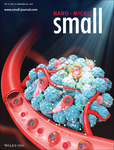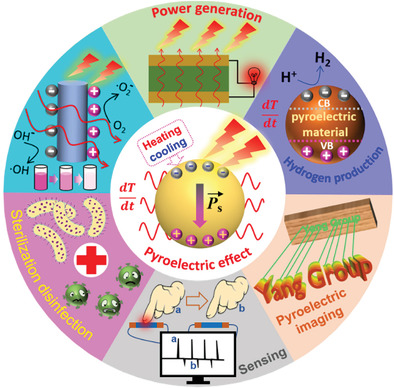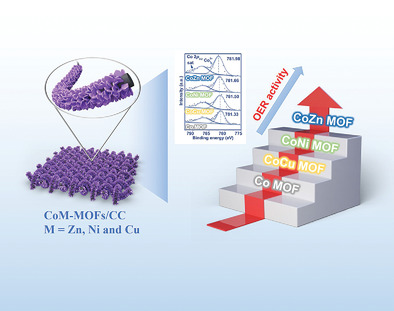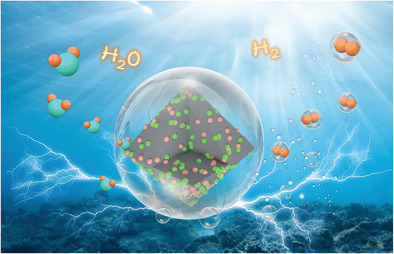Journal list menu
Export Citations
Download PDFs
Cover Picture
Biointerfacing Antagonizing T-Cell Inhibitory Nanoparticles Potentiate Hepatocellular Carcinoma Checkpoint Blockade Therapy (Small 51/2021)
- First Published: 23 December 2021
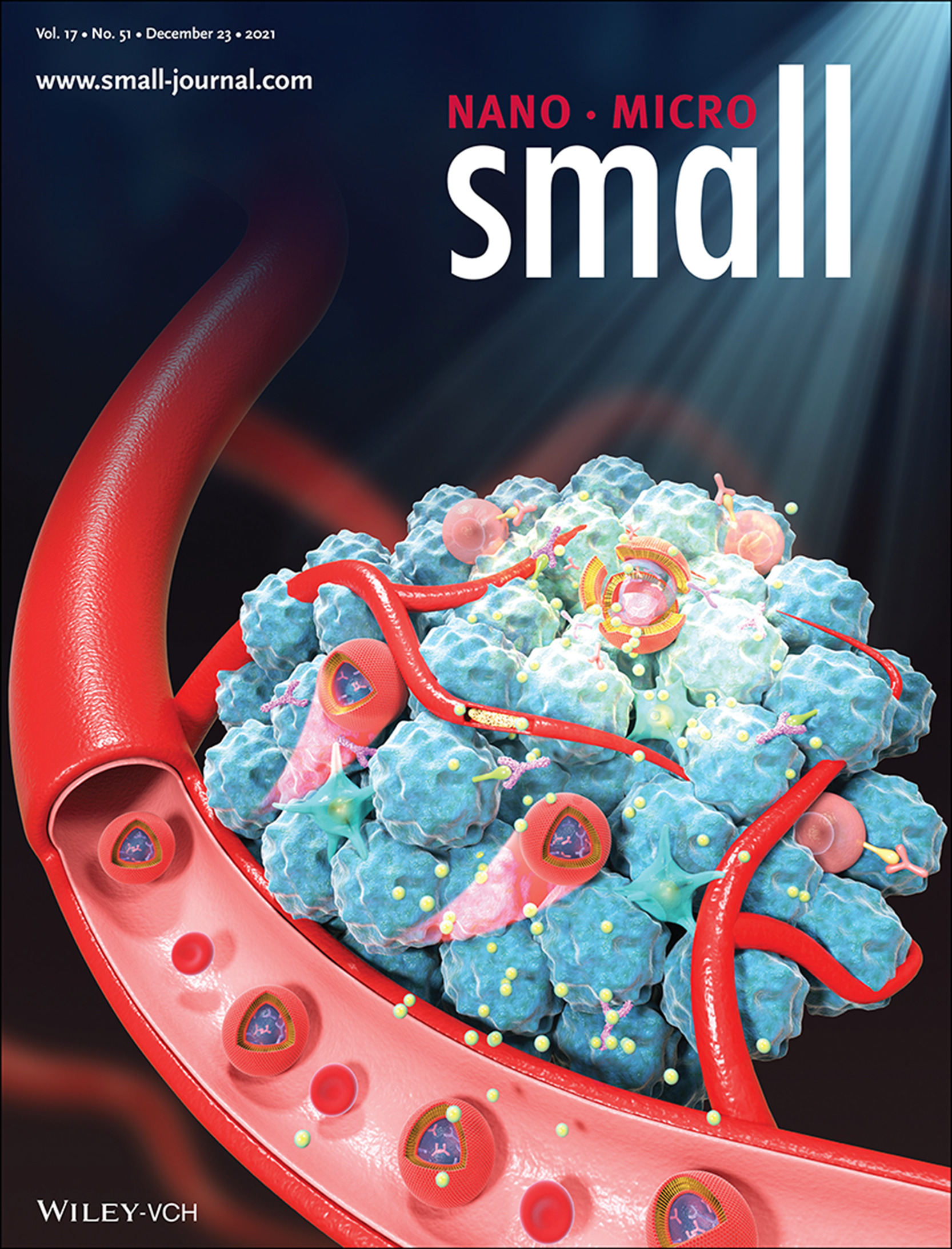
Biointerfacing Nanoparticles
In article number 2105237, Dong-Sheng Huang, Tian Yang, and co-workers develop a strategy of targeting therapeutic nanoparticles effectively reversing the immune-inhibiting microenvironment for enhanced PD-L1 checkpoint combination therapy. The platelet membrane cloaked nanoparticles activate the CD8+ T lymphocytes and antigen presentation of dendritic cells as well as the polarization of M1-type macrophages with the application of TIM-3 antibodies. With the collagen deposition, starvation therapy can enhance the efficacy of immunotherapy under a hypoxic microenvironment.
Inside Front Cover
DNAzyme-Functionalized Nanomaterials: Recent Preparation, Current Applications, and Future Challenges (Small 51/2021)
- First Published: 23 December 2021
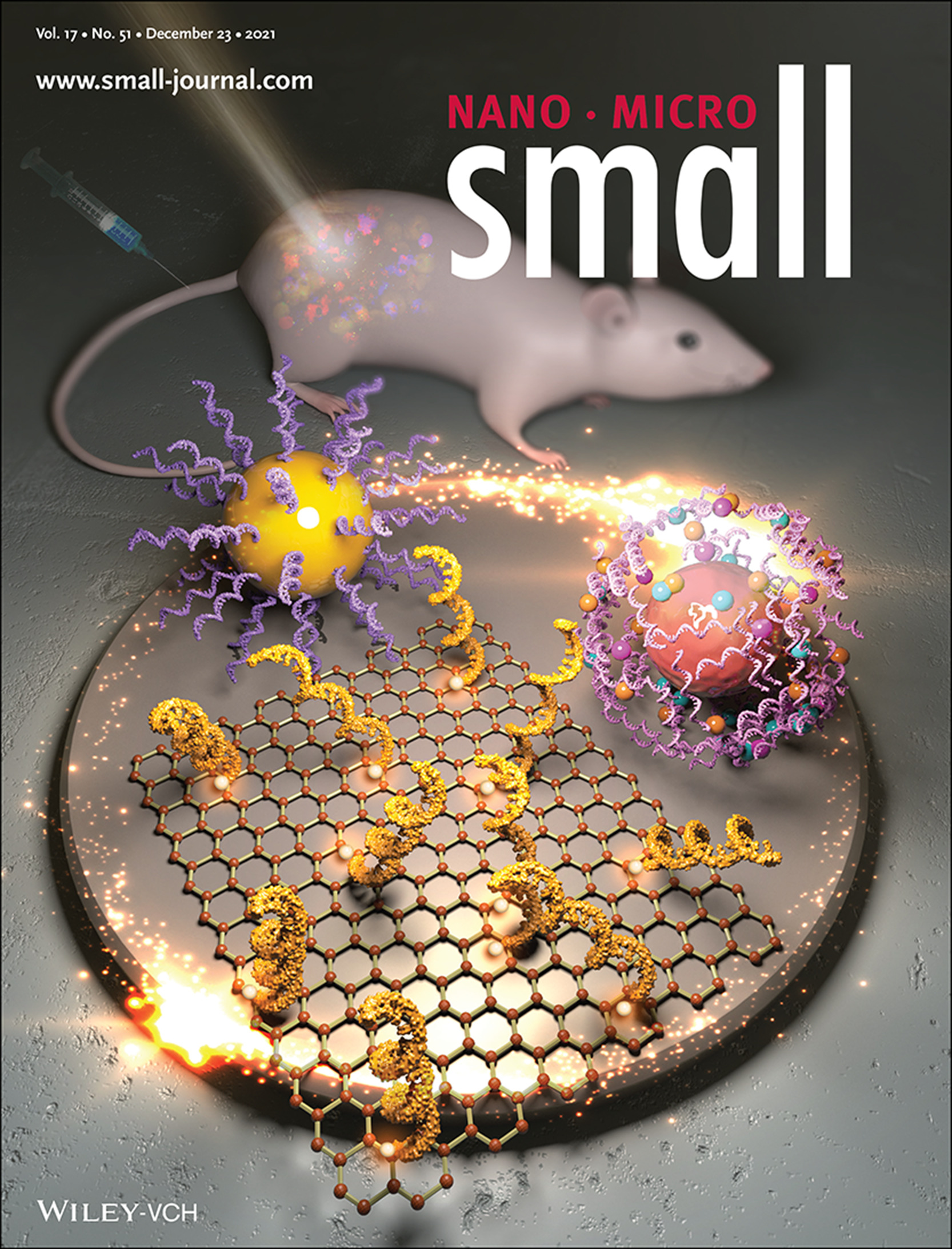
DNAzyme-Functionalized Nanomaterials
In article number 2105439, DNAzymes functionalized with metal–organic frameworks, gold nanoparticles, graphene oxide, and molybdenum disulfide are introduced and summarized in detail by Jabrane Jouha and Hai Xiong. Moreover, the authors focus on their biomedical applications, such as bioimaging, biosensor development, drug delivery, and cancer therapy in recent years.
Inside Back Cover
Migration Kinetics of Surface Ions in Oxygen-Deficient Perovskite During Topotactic Transitions (Small 51/2021)
- First Published: 23 December 2021
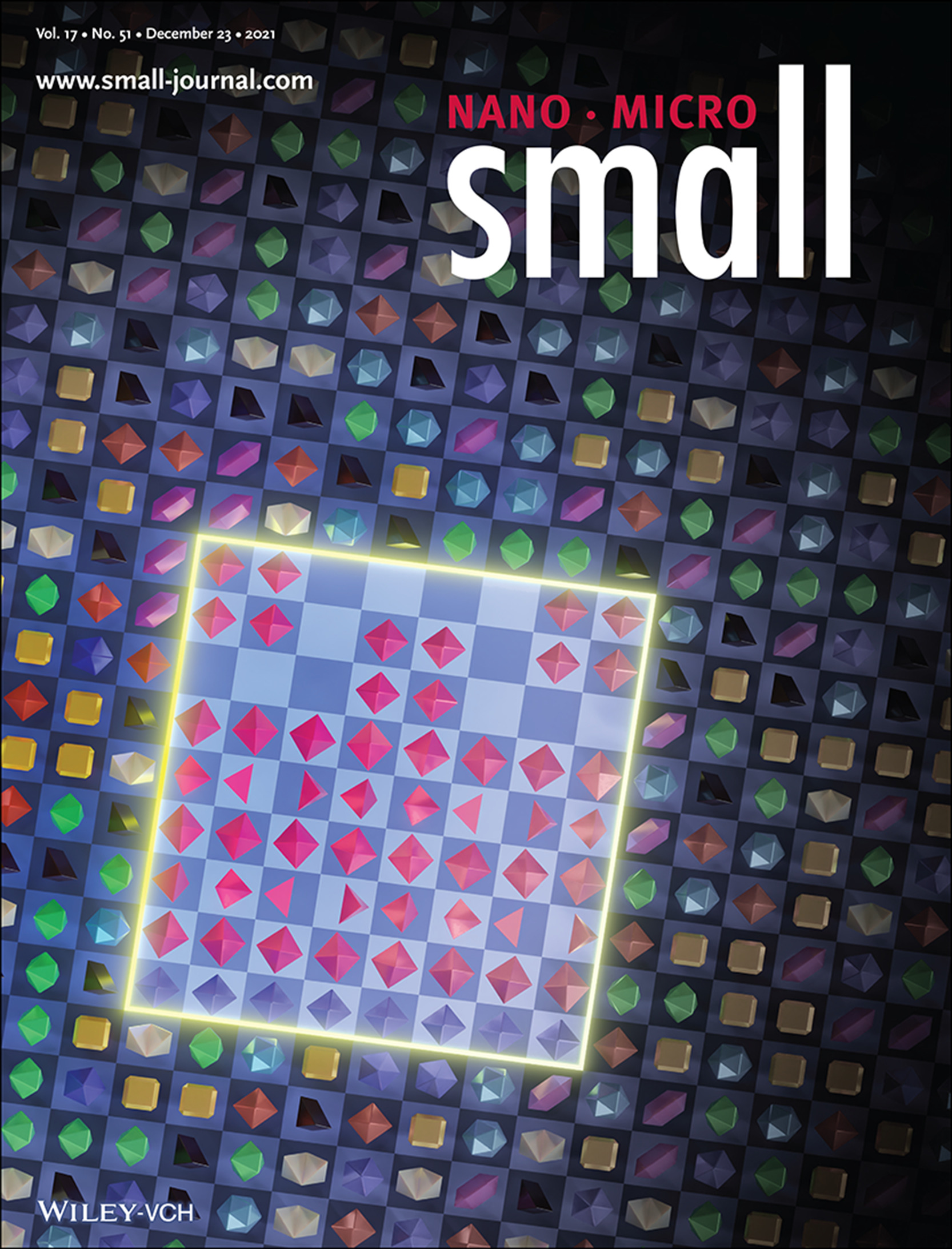
Topotactic Transitions
In article number 2104356, Lei Cao, Oleg Petracic, and co-workers report the first observation of a novel surface phase in La0.7Sr0.3MnO3-δ epitaxial thin films during the topotactic transition from perovskite to brownmillerite. Given the anisotropic vacancy channels found in the surface phase, the studies not only provide a deeper understanding of oxygen-transport behavior in oxides, but also offer optimal guidance to engineer coordination polyhedra towards desired properties.
Back Cover
Photo Rechargeable Li-Ion Batteries Using Nanorod Heterostructure Electrodes (Small 51/2021)
- First Published: 23 December 2021
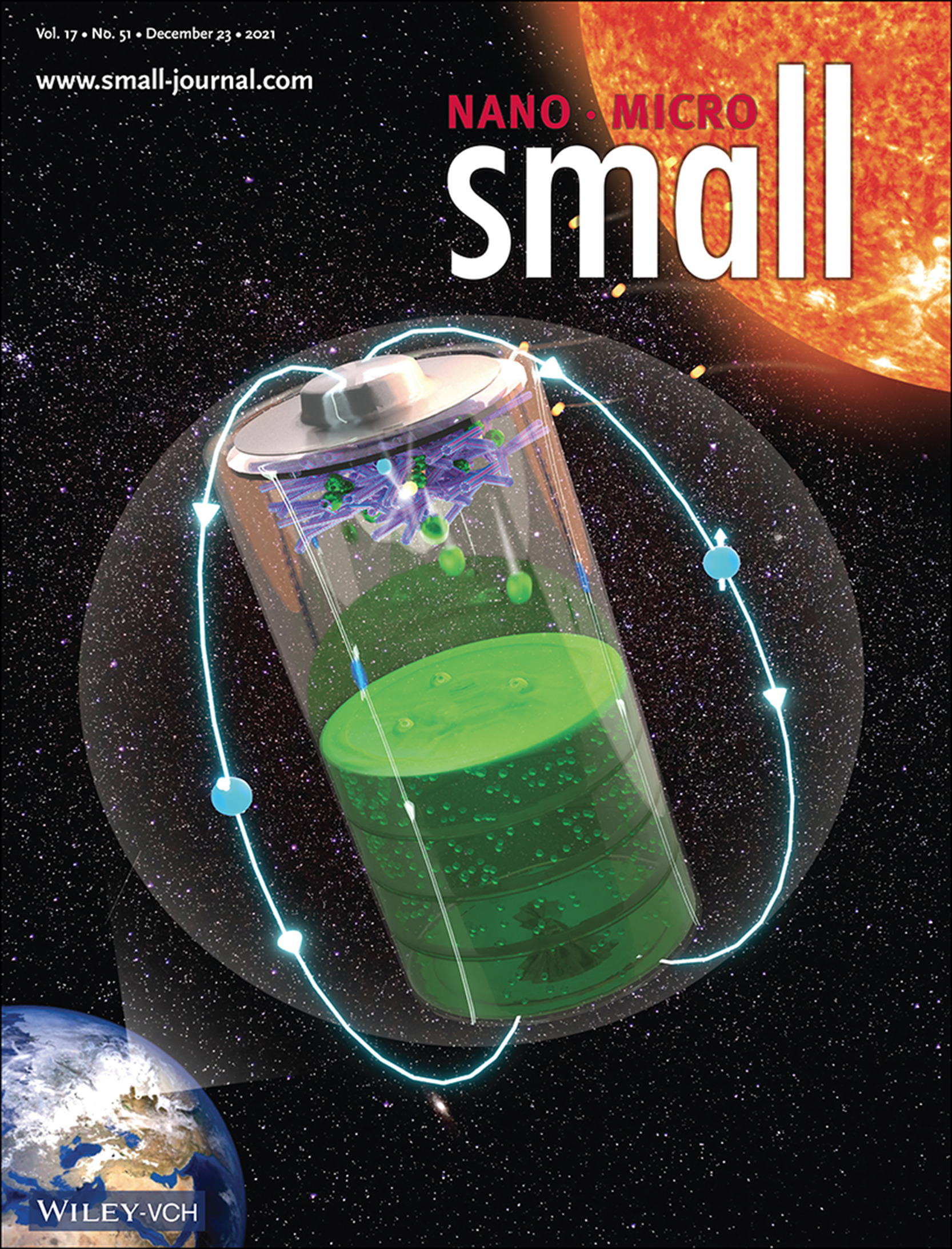
Li-Ion Batteries
In article number 2105029, Tharangattu N. Narayanan and co-workers show a single nanowire containing MoS2/MoOx regions as a photo-electrode for Li+ ion batteries. This inorganic nanowire-based two electrode solar battery can be highly stable in organic electrolytes while ensuring high lithium intercalation area and light–matter interaction volume. This opens up the potential for developing semiconductor heterostructures–based solar batteries where they can ensure stability and good photo-efficiency.
Masthead
Perspective
SiOx Anode: From Fundamental Mechanism toward Industrial Application
- First Published: 23 September 2021
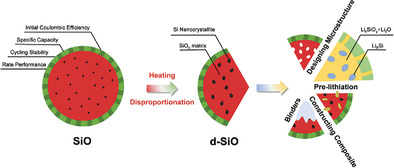
Silicon monoxide (SiO) is researched and applied as a promising anode material for lithium-ion batteries (LIBs). It is started from the preparation and microstructure of SiO, and modification is introduced including disproportionation, constructing composites, design of microstructure, different binders, and prelithiation. Also, the advantages and disadvantages are discussed from the perspective of practical application.
Reviews
DNAzyme-Functionalized Nanomaterials: Recent Preparation, Current Applications, and Future Challenges
- First Published: 21 November 2021
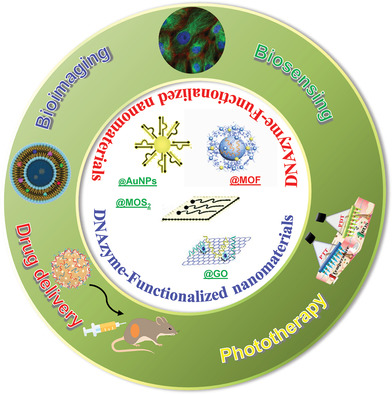
Here, DNAzymes functionalized with metal–organic frameworks (MOFs), gold nanoparticles (AuNPs), graphene oxide (GO), and molybdenum disulfide (MoS2) are introduced and summarized in detail. Moreover, the focus is on its biomedical applications, such as bioimaging, biosensor development, drug delivery, and cancer therapy in recent years.
Redox Active Cerium Oxide Nanoparticles: Current Status and Burning Issues
- First Published: 06 August 2021
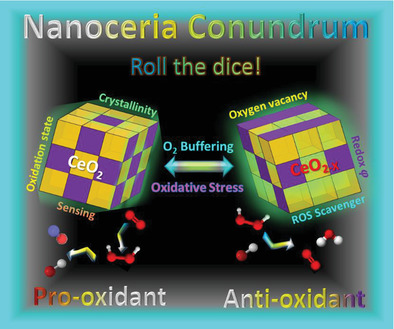
Cerium oxide nanoparticles (nanoceria) show unique oxidation state dependent enzyme mimicking activity. This review covers the current update on the proposed anti and pro-oxidant activity of nanoceria and the role of oxidation state, defects, and surface coatings on its activity and biological applications. It summarizes current information and proposes the next agenda of research on nanoceria.
Research Articles
Biointerfacing Antagonizing T-Cell Inhibitory Nanoparticles Potentiate Hepatocellular Carcinoma Checkpoint Blockade Therapy
- First Published: 17 November 2021
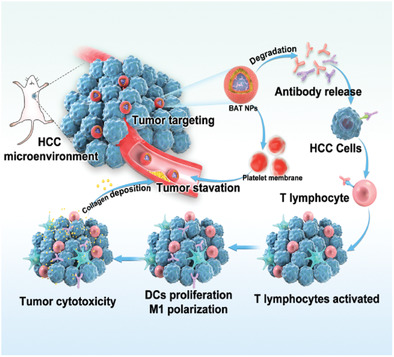
The biointerfacing antagonizing T-cell Inhibitory nanoparticles (BAT NPs) are synthesized to participate in Hepatocellular carcinoma immunoregulatory therapy and tumor starvation therapy. The platelet membrane acts as a bionic and targeted function. BAT NPs can be combined with PD-L1 checkpoint therapy to activate T cells, promote dendritic cells proliferation and M1 polarization, and the following collagen deposition contributes to starvation therapy.
Migration Kinetics of Surface Ions in Oxygen-Deficient Perovskite During Topotactic Transitions
- First Published: 17 November 2021

Towards harnessing the kinetics of oxygen transport in emerging technologies, the evolution of oxygen content is captured in real-time during the topotactic phase transition both at the surface and throughout the bulk. A novel surface phase induced by oxygen deficiency and cation excess is evidenced for the first time, further revealing an anisotropic oxygen migration path.
Photo Rechargeable Li-Ion Batteries Using Nanorod Heterostructure Electrodes
- First Published: 16 November 2021
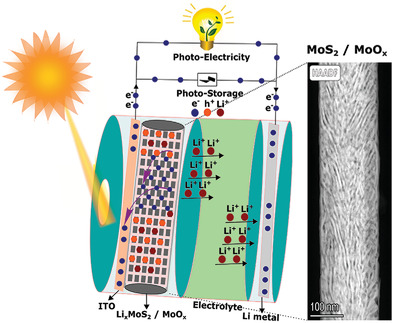
The working (photo charging) of single nanorod (NR) containing a MoS2/MoOx heterostructure based two-electrode photo rechargeable battery. A high-resolution high angle annual dark-field image of the NR is also shown indicating the structure containing both amorphous (MoOx) and crystalline (MoS2) regions.
Molecular Engineering of Laser-Induced Graphene for Potential-Driven Broad-Spectrum Antimicrobial and Antiviral Applications
- First Published: 20 October 2021
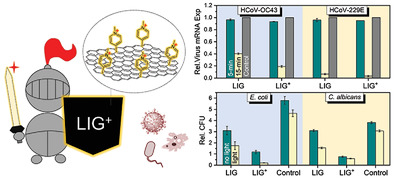
Chemical modification of laser-induced graphene with quaternary pyridinium inverts surface potential, which enables both broad-spectrum antimicrobial (≈100% for bacteria and fungi) and antiviral (≈100% for the human coronavirus HCoV-229E) activities from the synergy of photothermal effect and electrostatic interactions.
Origin of Intense Luminescence from Supramolecular 2D Molecular Crystals
- First Published: 07 October 2021
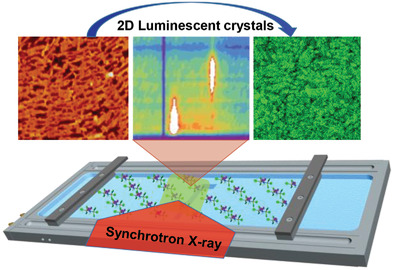
A promising strategy to fabricate 2D molecular crystals with a controlled packing using an interfacial technique is introduced. The conformation of molecules within the 2D crystals concomitantly leads to the reduced singlet-triplet energy-gap and strong spin-orbit coupling for the room temperature phosphorescence. This fabrication process allows large scale 2D crystals formation on solid substrates to realize sophisticated optoelectronic devices.
Bacteria-Triggered Multifunctional Hydrogel for Localized Chemodynamic and Low-Temperature Photothermal Sterilization
- First Published: 13 October 2021

By integrating the localized chemodynamic therapy, the as-prepared CHFH can high efficiently eliminate bacteria via photothermal therapy at low temperature, which has no obvious damage to the normal tissues and cells. The CHFH-based Band aid is further applied to promote wound healing of bacterially infected mice in vivo, realizing efficient debridement and improving tissue reconstruction.
Encapsulating Fe2O3 Nanotubes into Carbon-Coated Co9S8 Nanocages Derived from a MOFs-Directed Strategy for Efficient Oxygen Evolution Reactions and Li-Ions Storage
- First Published: 15 October 2021
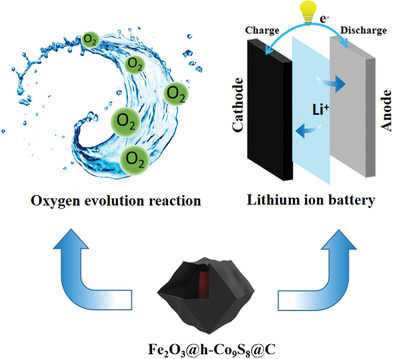
A unique yolk-shell structure of Fe2O3 nanotube@hollow Co9S8 nanocage@C is rationally designed and synthesized via engineering a Fe2O3 nanotube@ZIF-67 core-shell structure followed by chemical etching/anion exchange and carbonization at high temperature in sequence. This material exhibits outstanding electrocatalytic activity and stability for alkaline oxygen evolution reaction, and good high-rate capability as anode material of Li-ions batteries.
In Situ Growing BCN Nanotubes on Carbon Fibers for Novel High-Temperature Supercapacitor with Excellent Cycling Performance
- First Published: 12 October 2021
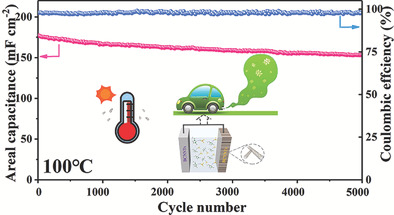
In order to explore a supercapacitor with high energy and desired stability at high temperature, BCN nanotubes (BCNNTs) are in situ grown on carbon fibers by optimizing the ratio of B and N for the first time. The symmetric supercapacitor based on the self-supporting BCNNTs electrodes in ionic liquid of 1-ethyl-3-methylimidazolium tetrafluoroborate (EMIM·BF4) exhibits splendid cycling stability at 100 °C.
Anchoring Group Mediated Radiolabeling for Achieving Robust Nanoimaging Probes
- First Published: 15 October 2021
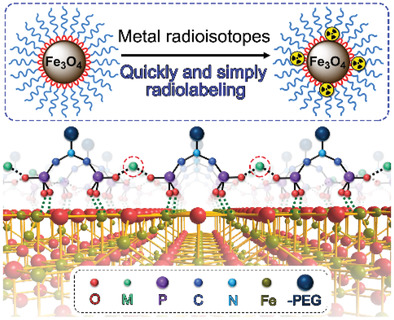
A novel and simple Ligand Anchoring Group MEdiated RAdioLabeling (LAGMERAL) method for effectively labeling functional inorganic nanoparticles with metal radioisotopes has been developed. The LAGMERAL method positions the radiometal ions at the root of the particle ligands, which cross-link the ligands through the unique diphosphate anchoring groups, leading to robust radiolabeling stability both in vitro and in vivo.
Probing Atomic-Scale Fracture of Grain Boundaries in Low-symmetry 2D Materials
- First Published: 13 October 2021
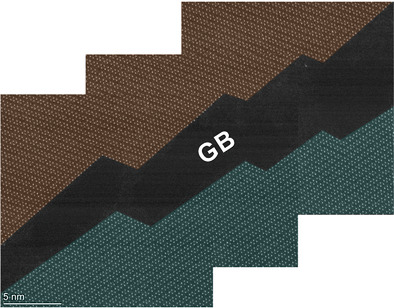
A joint experiment-theory investigation is conducted to unveil the fracture mechanics of grain boundaries (GBs) in low-symmetry monolayer rhenium disulfide at the single-atom level. GBs having different Re chain alignment with respect to the GB orientation display disparate crack behaviors, indicating the GB type-dependent mechanical failure in anisotropic 2D polycrystals, which gives fundamental insights into GB engineering.
Interfacial Engineering of Na3V2(PO4)2F3 Hollow Spheres through Atomic Layer Deposition of TiO2: Boosting Capacity and Mitigating Structural Instability
- First Published: 15 October 2021

Boosting discharge capacity and mitigating structural instability in Na3V2(PO4)2F3 is achieved through conformal coating the surface by TiO2 through atomic layer deposition. The ultrathin protection layer shields the surface of Na3V2(PO4)2F3 which endows with negligible volume expansion, significantly less formation of carbonates, and decomposition of electrolyte.
3D Hollow Xerogels with Ordered Cellulose Nanocrystals for Tailored Mechanical Properties
- First Published: 27 October 2021
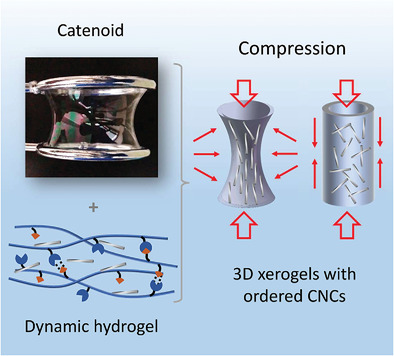
Complex 3D hollow xerogels with aligned CNCs are prepared from dynamic hydrogels by mechanical stretching and air-drying process. Their mechanical properties are revealed for the first time to be controlled by changing the morphology of the initial hydrogels and the mechanical stretching ratios. Both the aligned CNCs on the nanoscale and the geometry of the xerogels affect the mechanical properties.
Wearable Bifocal Contact Lens for Continual Glucose Monitoring Integrated with Smartphone Readers
- First Published: 03 October 2021
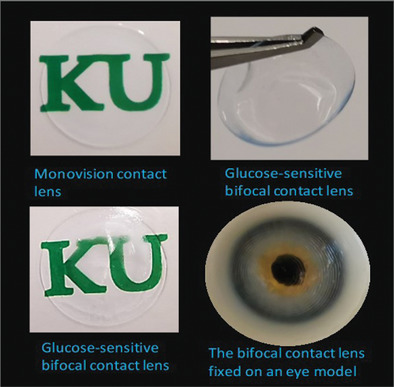
A bifocal contact lens is demonstrated for glucose sensing under physiological conditions. The Fresnel lens imprinted on the glucose-responsive hydrogel creates an additional focal length for the spherical monovision contact lens. Focusing efficiency and focal length of the Fresnel lens are altered by changing glucose concentrations in tears. Consequently, the reflected optical power can be used for glucose measurements.
Ultrathin Twisted Germanium Sulfide van der Waals Nanowires by Bismuth Catalyzed Vapor–Liquid–Solid Growth
- First Published: 16 October 2021
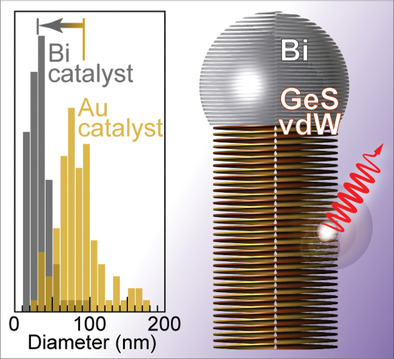
Germanium sulfide (GeS) van der Waals nanowires are of interest for twistronics due to their tunable interlayer twist. Using Bi as a vapor–liquid–solid growth catalyst extends the accessible diameters of GeS nanowires down to ≈15 nm while maintaining tens of µm in length. The ultrathin nanowires carry screw dislocations, are chiral, achieve high twist rates, and show pronounced quantum confinement.
Electrospun PCL/MoS2 Nanofiber Membranes Combined with NIR-Triggered Photothermal Therapy to Accelerate Bone Regeneration
- First Published: 13 October 2021
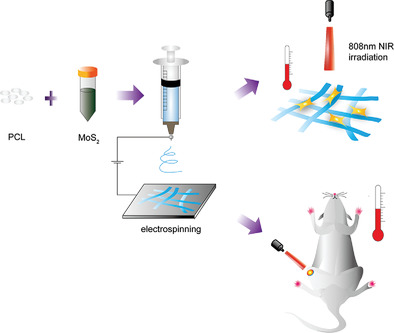
In this paper, a poly(ε-caprolactone)/molybdenum disulfide (PCL/MoS2) nanofiber membrane with high biocompatibility is prepared for guided bone regeneration (GBR). Under near-infrared-triggered mild photothermal therapy, the PCL/MoS2 nanofiber membrane exhibits excellent performance in promoting the growth of osteoblasts and repairing bone defects. This study suggests that GBR combined with photothermal therapy can provide new insights into the therapy of bone defects.
Polyphenylene Sulfide-Based Solid-State Separator for Limited Li Metal Battery
- First Published: 02 November 2021

A high-crystallized, thin, and dense lithiated polyphenylene sulfide (PPS) based solid state separator is prepared by a solvent-free process with repeated rolling, which is functionized by anions binding and protected by polyethylene (PE) on the anodic side, achieving high voltage and homogenous Li plating.
Atomic Fingerprinting of Heteroatoms Using Noncontact Atomic Force Microscopy
- First Published: 01 October 2021
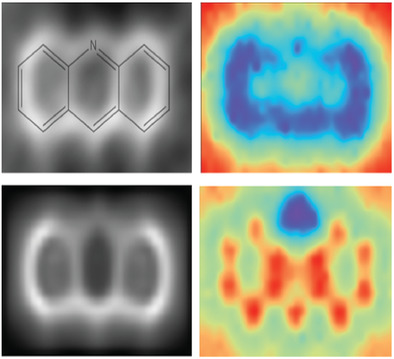
Noncontact atomic force microscopy (nc-AFM) with an inert tip can visualize molecules with subatomic resolution. However, discriminating atomic species remains a challenge. Density functional theory is used to simulate nc-AFM images of molecules containing heteroatoms (S, I, and N). It is found that using a CO tip can distinguish S and I from C. For N, using different tip chemistry inverts image contrast and therefore the position of N can be determined.
Understanding the Effect of Second Metal on CoM (M = Ni, Cu, Zn) Metal–Organic Frameworks for Electrocatalytic Oxygen Evolution Reaction
- First Published: 28 October 2021
Elucidating the Strain–Vacancy–Activity Relationship on Structurally Deformed Co@CoO Nanosheets for Aqueous Phase Reforming of Formaldehyde
- First Published: 11 October 2021

A kind of novel Co@CoO heterostructure catalyst featuring tunable lattice strain and oxygen vacancy concentration is synthetized, forming strained Ov-rich Co–CoO interfaces in Co@CoO which serve as active sites that efficiently catalyze the aqueous reforming of formaldehyde to produce H2. Experiments show highly linear correlations between catalytic activities of the interface sites and oxygen vacancy concentration, lattice strain.
Hollow Atomic Force Microscopy Cantilevers with Nanoscale Wall Thicknesses
- First Published: 28 October 2021
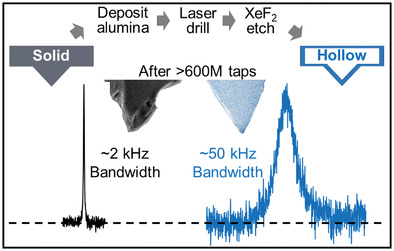
This article presents hollow alumina thin-walled atomic force microscopy cantilevers that scan specimens rapidly yet wear down more slowly than their solid silicon counterparts. With wall thicknesses as low as 20 nm, these improvements are attributable to the probes′ robust thin-walled hollow atomic-layer-deposited alumina profiles, which increase their bandwidth in air and provide impact resilience and wear resistance.
Highly Self-Healable Write-Once-Read-Many-Times Devices Based on Polyvinylalcohol-Imidazole Modified Graphene Nanocomposites
- First Published: 07 October 2021
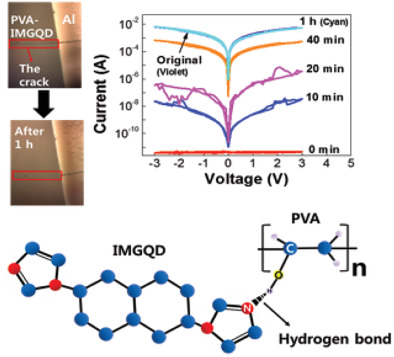
Memory device based on polyvinylalcohol-imidazole modified graphene quantum dot (PVA-IMGQD) nanocomposite is fabricated. The damaged active layer achieves complete self-healing in 1 h at a temperature of 50 °C. The self-healing property of the device is attributed to the hydrogen bonding between the imidazole groups of IMGQDs and the hydroxyl groups of PVA macromolecules.
Molybdenum Carbide-PtCu Nanoalloy Heterostructures on MOF-Derived Carbon toward Efficient Hydrogen Evolution
- First Published: 28 October 2021
Photoactivated Self-Disassembly of Multifunctional DNA Nanoflower Enables Amplified Autophagy Suppression for Low-Dose Photodynamic Therapy
- First Published: 20 October 2021
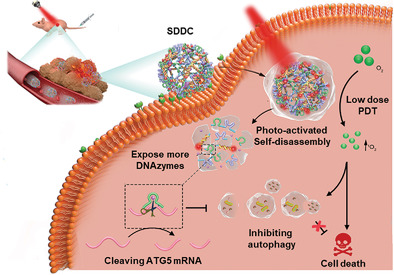
An efficient autophagy suppressor is constructed for improving the therapeutic effect of low-dose photodynamic therapy, which can perform photoactivated burst release of oligonucleotide drug by self-disassembly of DNA nanostructure to achieve amplified ATG5 gene silencing for enhancing antitumor effect.
Revealing Size Dependent Structural Transitions in Supported Gold Nanoparticles in Hydrogen at Atmospheric Pressure
- First Published: 10 November 2021
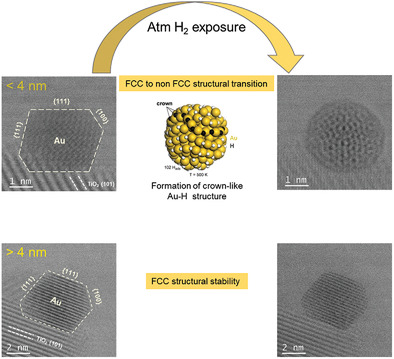
Atomic-resolution transmission electron microscopy reveals size-dependent structural transformations in supported gold nanoparticles upon exposure to hydrogen at atmospheric pressure. Molecular dynamics simulations highlight the role of mobile gold atoms in the evolution of particle crystal structure and morphology observed below 4 nm and unveil the unique atomic and electronic structures of hydrogenated gold nanoparticles in this critical size regime.
Magnetic Relaxation Switching Immunoassay Based on Hydrogen Peroxide-Mediated Assembly of Ag@Au–Fe3O4 Nanoprobe for Detection of Aflatoxin B1
- First Published: 06 November 2021

Dumbbell-like Au–Fe3O4 nanoparticles are designed as magnetic nanoprobes to participate in the hydrogen peroxide-mediated assembly of Ag@Au–Fe3O4 for magnetic biosensing. Compared with enzyme-linked immunosorbent assay, this Ag@Au–Fe3O4–MRS immunosensor not only improves the sensitivity (21-fold enhancement) but also enhances the stability in the detection of aflatoxin B1, which greatly broaden the applications of magnetic relaxation switching biosensors.
An Orthogonal Covalent Connector System for the Efficient Assembly of Enzyme Cascades on DNA Nanostructures
- First Published: 25 November 2021

Through rational protein engineering, an effective, genetically fusible connector for site-selective immobilization of enzymes on DNA nanostructures is developed. Due to the greater than tenfold increase in coupling efficiency, a biocatalytic cascade reaction for the stereoselective reduction of carbonyl compounds is established by combining it with an equally efficient orthogonal connector.




